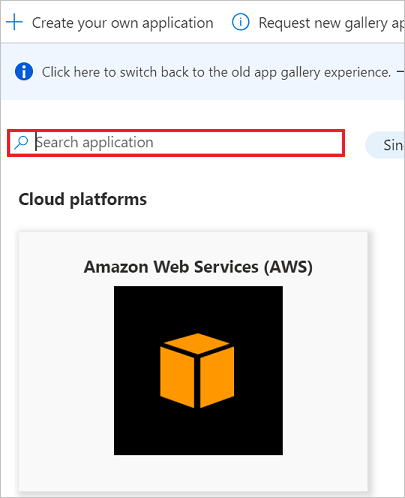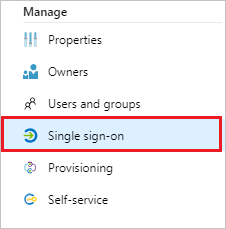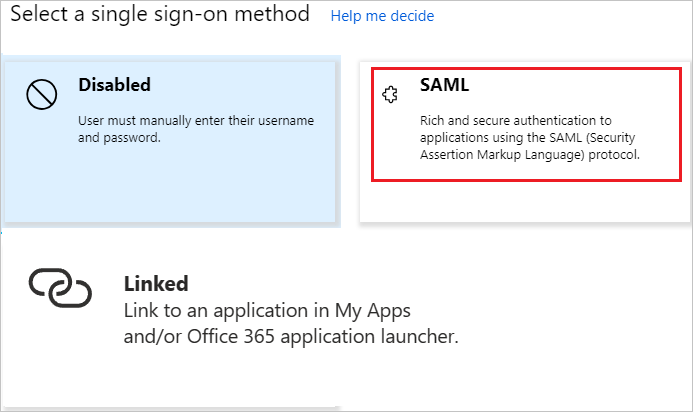Tutorial: Microsoft Entra integration with AppBlade
In this tutorial, you learn how to integrate AppBlade with Microsoft Entra ID. Integrating AppBlade with Microsoft Entra ID provides you with the following benefits:
- You can control in Microsoft Entra ID who has access to AppBlade.
- You can enable your users to be automatically signed-in to AppBlade (Single Sign-On) with their Microsoft Entra accounts.
- You can manage your accounts in one central location.
If you want to know more details about SaaS app integration with Microsoft Entra ID, see What is application access and single sign-on with Microsoft Entra ID. If you don't have an Azure subscription, create a free account before you begin.
Prerequisites
To configure Microsoft Entra integration with AppBlade, you need the following items:
- A Microsoft Entra subscription. If you don't have a Microsoft Entra environment, you can get one-month trial here
- AppBlade single sign-on enabled subscription
Scenario description
In this tutorial, you configure and test Microsoft Entra single sign-on in a test environment.
- AppBlade supports SP initiated SSO
- AppBlade supports Just In Time user provisioning
Adding AppBlade from the gallery
To configure the integration of AppBlade into Microsoft Entra ID, you need to add AppBlade from the gallery to your list of managed SaaS apps.
To add AppBlade from the gallery, perform the following steps:
Sign in to the Microsoft Entra admin center as at least a Cloud Application Administrator.
Browse to Identity > Applications > Enterprise applications > New application.
In the Add from the gallery section, type AppBlade, select AppBlade from result panel then click Add button to add the application.

Configure and test Microsoft Entra single sign-on
In this section, you configure and test Microsoft Entra single sign-on with AppBlade based on a test user called Britta Simon. For single sign-on to work, a link relationship between a Microsoft Entra user and the related user in AppBlade needs to be established.
To configure and test Microsoft Entra single sign-on with AppBlade, you need to complete the following building blocks:
- Configure Microsoft Entra Single Sign-On - to enable your users to use this feature.
- Configure AppBlade Single Sign-On - to configure the Single Sign-On settings on application side.
- Create a Microsoft Entra test user - to test Microsoft Entra single sign-on with Britta Simon.
- Assign the Microsoft Entra test user - to enable Britta Simon to use Microsoft Entra single sign-on.
- Create AppBlade test user - to have a counterpart of Britta Simon in AppBlade that is linked to the Microsoft Entra representation of user.
- Test single sign-on - to verify whether the configuration works.
Configure Microsoft Entra single sign-on
In this section, you enable Microsoft Entra single sign-on.
To configure Microsoft Entra single sign-on with AppBlade, perform the following steps:
Sign in to the Microsoft Entra admin center as at least a Cloud Application Administrator.
Browse to Identity > Applications > Enterprise applications > AppBlade application integration page, select Single sign-on.

On the Select a Single sign-on method dialog, select SAML/WS-Fed mode to enable single sign-on.

On the Set up Single Sign-On with SAML page, click Edit icon to open Basic SAML Configuration dialog.

On the Basic SAML Configuration section, perform the following steps:

In the Sign-on URL text box, type a URL using the following pattern:
https://<companyname>.appblade.com/saml/<tenantid>Note
The value is not real. Update the value with the actual Sign-On URL. Contact AppBlade Client support team to get the value. You can also refer to the patterns shown in the Basic SAML Configuration section.
On the Set up Single Sign-On with SAML page, in the SAML Signing Certificate section, click Download to download the Federation Metadata XML from the given options as per your requirement and save it on your computer.

On the Set up AppBlade section, copy the appropriate URL(s) as per your requirement.

a. Login URL
b. Microsoft Entra Identifier
c. Logout URL
Configure AppBlade Single Sign-On
To configure single sign-on on AppBlade side, you need to send the downloaded Federation Metadata XML and appropriate copied URLs from the application configuration to AppBlade support team. Also, please ask them to configure the SSO Issuer URL as https://appblade.com/saml. This setting is required for single sign-on to work.
Create a Microsoft Entra test user
The objective of this section is to create a test user called Britta Simon.
- Sign in to the Microsoft Entra admin center as at least a User Administrator.
- Browse to Identity > Users > All users.
- Select New user > Create new user, at the top of the screen.
- In the User properties, follow these steps:
- In the Display name field, enter
B.Simon. - In the User principal name field, enter the username@companydomain.extension. For example,
B.Simon@contoso.com. - Select the Show password check box, and then write down the value that's displayed in the Password box.
- Select Review + create.
- In the Display name field, enter
- Select Create.
Assign the Microsoft Entra test user
In this section, you enable Britta Simon to use Azure single sign-on by granting access to AppBlade.
Sign in to the Microsoft Entra admin center as at least a Cloud Application Administrator.
Browse to Identity > Applications > Enterprise applications > AppBlade.

In the applications list, select AppBlade.

In the app's overview page, select Users and groups.
Select Add user/group, then select Users and groups in the Add Assignment dialog.
- In the Users and groups dialog, select B.Simon from the Users list, then click the Select button at the bottom of the screen.
- If you are expecting a role to be assigned to the users, you can select it from the Select a role dropdown. If no role has been set up for this app, you see "Default Access" role selected.
- In the Add Assignment dialog, click the Assign button.
Create AppBlade test user
The objective of this section is to create a user called Britta Simon in AppBlade. AppBlade supports just-in-time provisioning, which is by default enabled. Make sure that your domain name is configured with AppBlade for user provisioning. After that only the just-in-time user provisioning works.
If the user has an email address ending with the domain configured by AppBlade for your account, then the user will automatically join the account as a member with the permission level you specify, which is one of "Basic" (a basic user who can only install applications), "Team Member" (a user who can upload new app versions and manage projects), or "Administrator" (full admin privileges to the account). Normally one would choose Basic and then promote users manually via an Admin login (AppBlade needs to configure either an email-based admin login in advance or promote a user on behalf of the customer after login).
There is no action item for you in this section. A new user is created during an attempt to access AppBlade if it doesn't exist yet.
Note
If you need to create a user manually, you need to contact the AppBlade support team.
Test single sign-on
In this section, you test your Microsoft Entra single sign-on configuration using the Access Panel.
When you click the AppBlade tile in the Access Panel, you should be automatically signed in to the AppBlade for which you set up SSO. For more information about the Access Panel, see Introduction to the Access Panel.